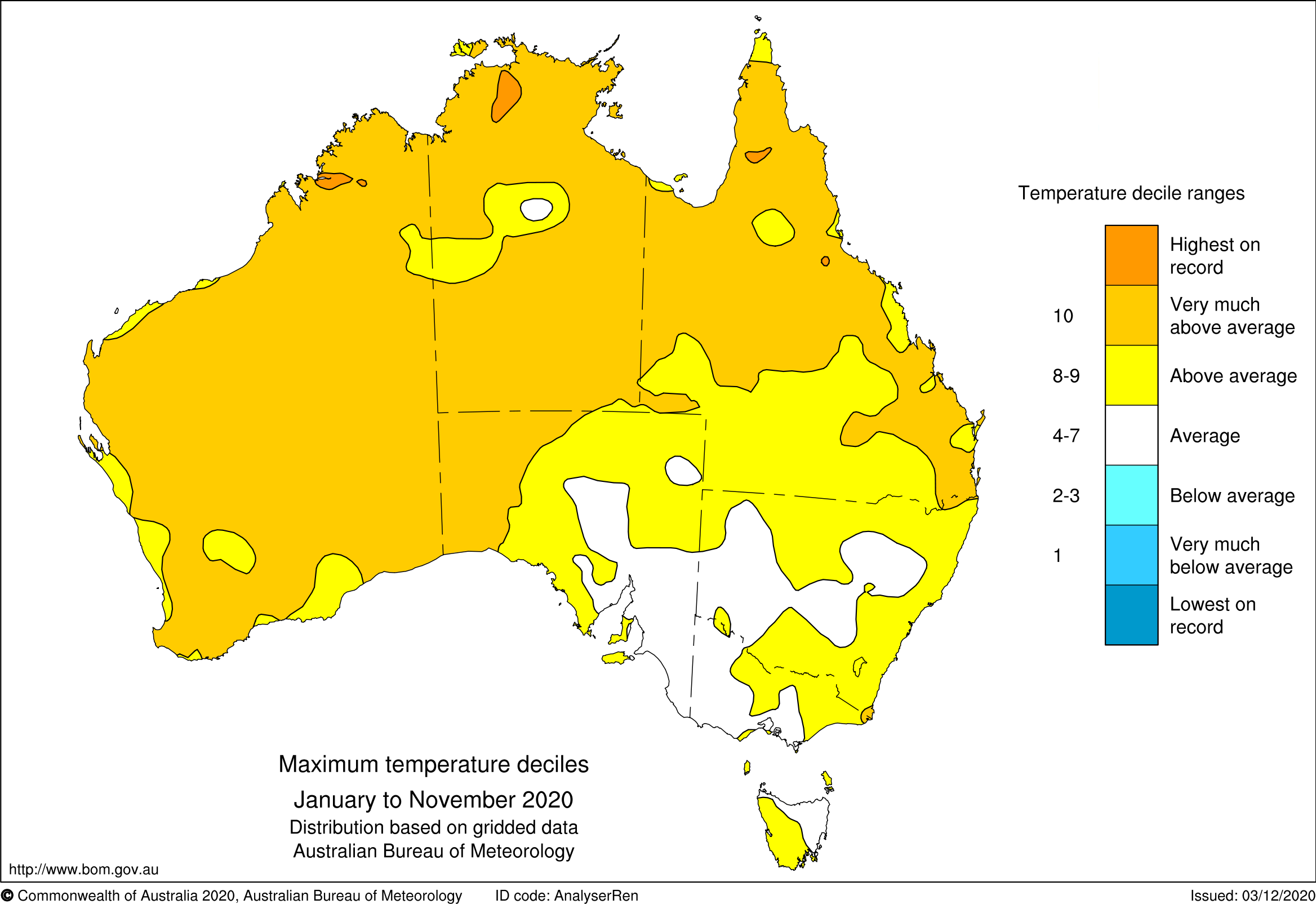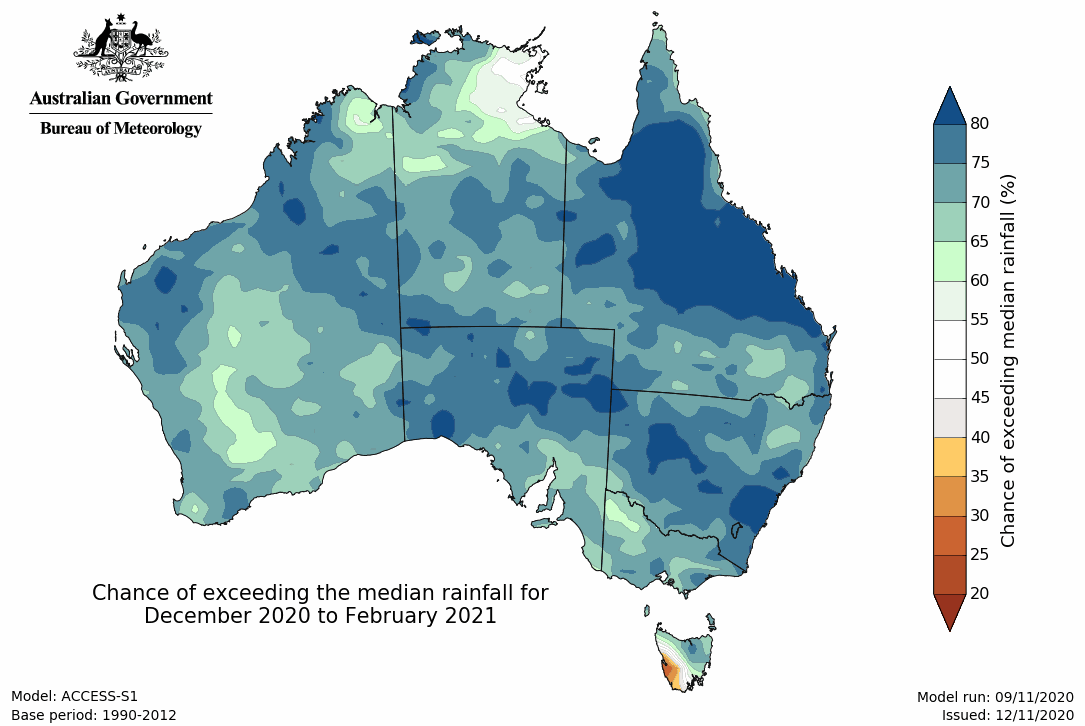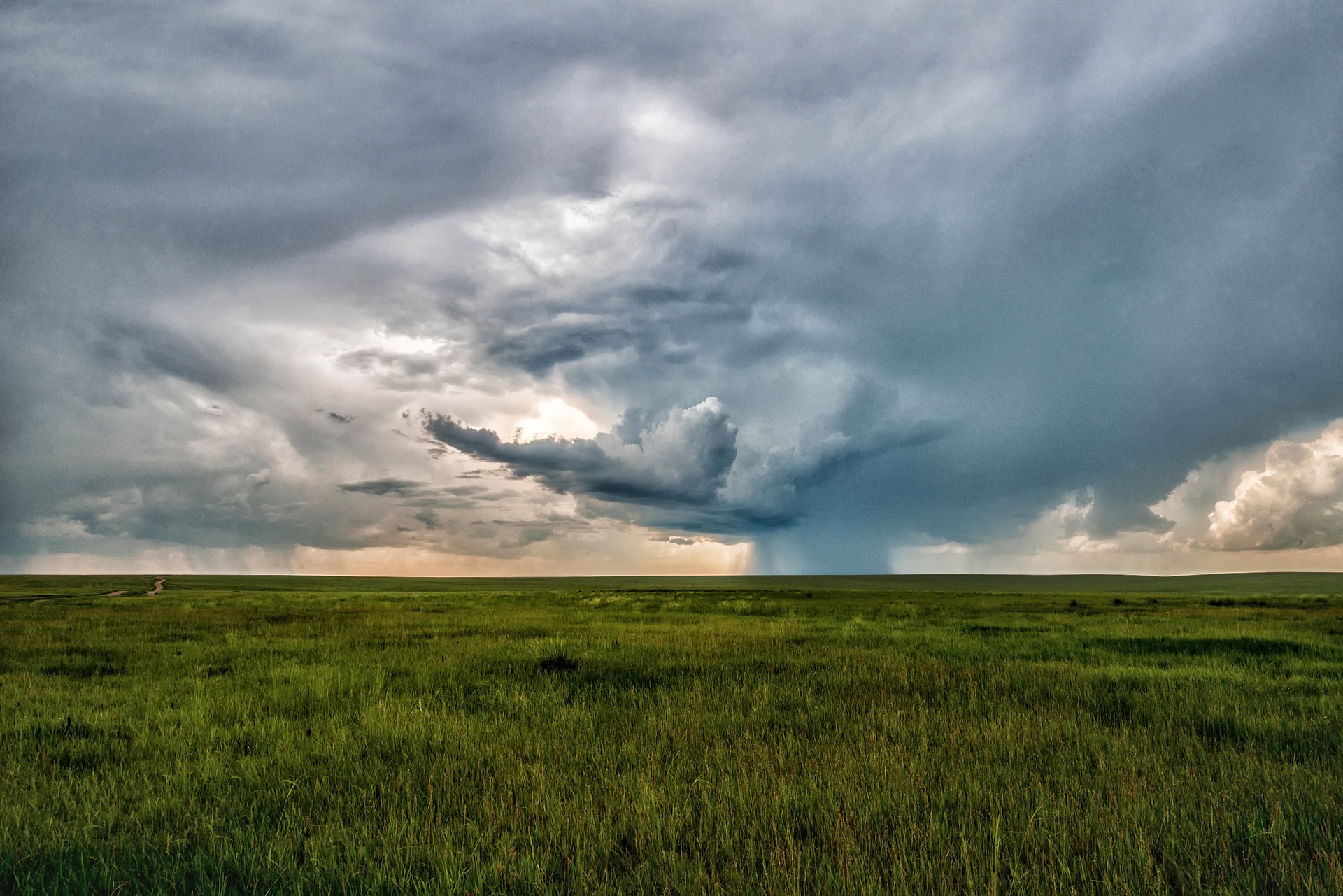Australia's has endured its warmest spring on record, with 2020 likely to be among the top five hottest years in history.
Statistics from the Bureau of Meteorology show Spring and November 2020 were the warmest on record around the country.
The start of the year set the tone for the remainder of 2020 with devastating bushfires across Victoria and New South Wales fueled by extreme heat across eastern Australia in January.
IN PICTURES: Fire, snow and floods: The weather extremes of 2020

Several states including Queensland, NSW, Victoria, the Northern Territory and Western Australia have recently sweltered through a major heatwave, with some places smashing heat records.
January to November temperatures were above average to very much above average for most of the country except for parts of the south-east.
Australia's minimum temperature for January to November was the fourth warmest on record, with above average minimum temperatures generally across the same regions as for maximum temperature.
READ MORE: Drought in NSW drops by almost 80 per cent as La Nina kicks in

Mean temperatures for January to November were third-warmest on record for Australia as a whole.
The outlook for December indicates maximum temperatures are likely to be above average in eastern Australia and along the coast, and below average in central Western Australia.
Minimum temperatures are likely to be above average for almost all of Australia in December.


Rainfall for Australia is very likely to be close to average this year despite Cyclone Esther which brought flooding to Queensland and had impacts as far south as Victoria in February.
Western Tasmania, the west and southwest of Western Australia, parts of central Australia, the Top End and parts of eastern Queensland have recorded below average rainfall.
The 2020 La Niña has contributed to increased rainfall in recent months however the event has failed to bring down temperatures.
This year's La Niña has so far has been of moderate strength and resulted in winter-spring rainfall exceed that of recent years.
Above average rainfall recorded across much of New South Wales, south-west Queensland, central Victoria, eastern Tasmania and parts of the Northern Territory and northern Western Australia.
Higher than average rainfall since February resulted in an increase of more than 30 per cent to 61 per cent across Murray–Darling Basin at the end of November.

The total water storage level in the northern Murray–Darling Basin was extremely low at only 5.6 per cent at the start of 2020. Levels have since risen to 25 per cent by the end of November.
Despite this, water storage remains low across most of the northern Basin and levels in northern Western Australia and the Northern Territory continued to fall this year.
Water levels in Lake Argyle, the largest water supply storage in Australia, have been decreasing since September 2017.
A weak wet season in Darwin has resulted in the Darwin River reaching its lowest storage level in 10 years.
from 9News https://ift.tt/2JMCojo
via IFTTT


0 Comments